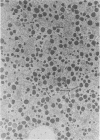Abstract
The effects of the administration of methyl clofenapate (methyl-2-[4-(p-chlorophenyl)phenoxy]2-methylpropionate) on the inducibility of hepatic microbody (peroxisome) proliferation and catalase synthesis were studied in male rats and in both sexes of wild type (Csa strain) and acatalasemic (Csb strain) mice. These investigations included electron microscopic examination of livers, assay of liver catalase activity, quantitation of catalase protein by immunotitration procedure, and measurements of serum cholesterol and glyceride-glycerol levels. In all groups of animals administration of methyl clofenapate at dietary concentrations of 0.015, 0.05 and 0.125% produced a significant and sustained increase in number of hepatic microbody (peroxisome) profiles. There was no appreciable increase in mitochondrial population, but several mitochondria were markedly enlarged and possessed numerous cristae. The hepatic microbody proliferation in male rats and in both sexes of wild type mice following methyl clofenapate administration was associated with a twofold increase in catalase activity and in the concentration of catalase protein. The increase in microbody population in acatalasemic mice, however, was not accompanied by a significant elevation of the catalase activity, which is due to the unusual heat lability of the mutant catalase enzyme. A marked decrease in serum cholesterol and glyceride-glycerol levels was observed in male rats following methyl clofenapate administration which paralleled the increase in liver catalase activity. In both strains of mice there was a significant reduction in serum glyceride-glycerol concentrations. All the above effects of methyl clofenapate were fully reversed when the drug was withdrawn from the diet of male wild type mice. The demonstration of microbody proliferation and catalase induction with hypolipidemic compounds, CPIB, nafenopin and, in these studies, with methyl clofenapate suggests a possible but as yet unclarified relationship between microbodies and hypolipidemia.
Full text
PDF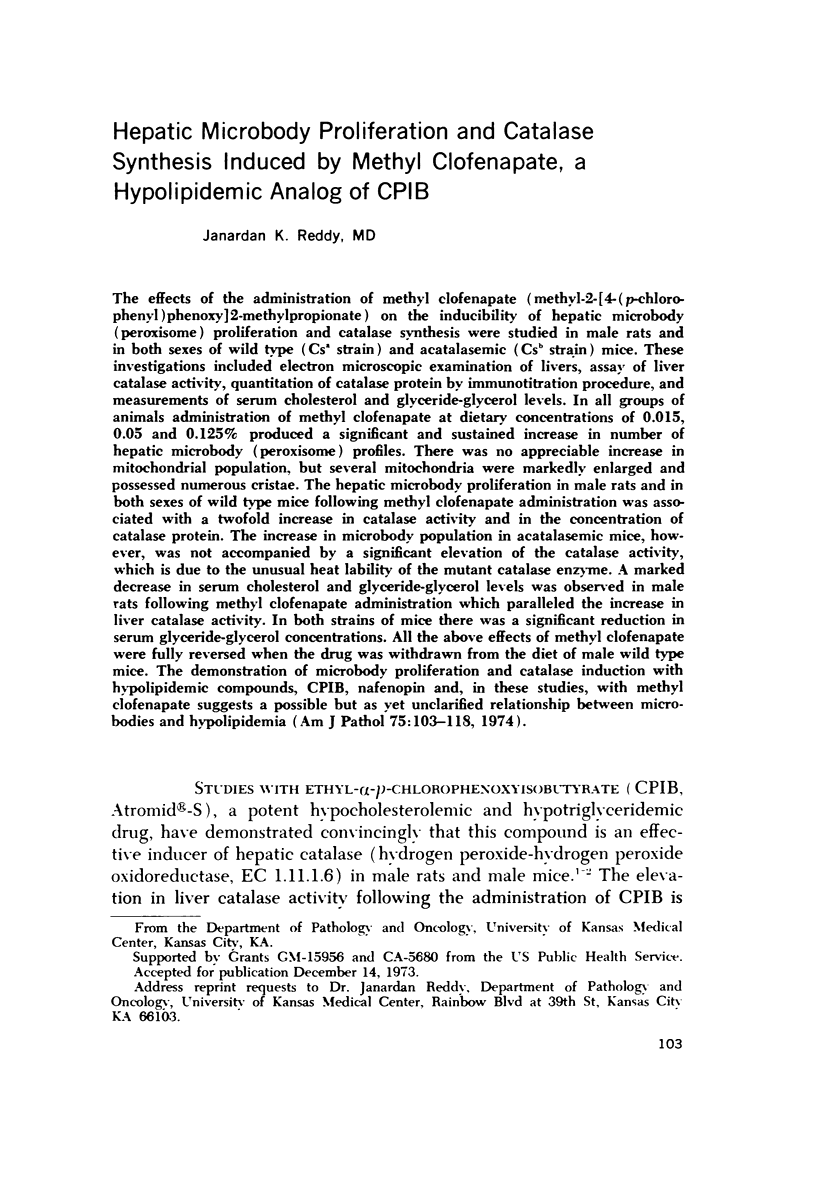
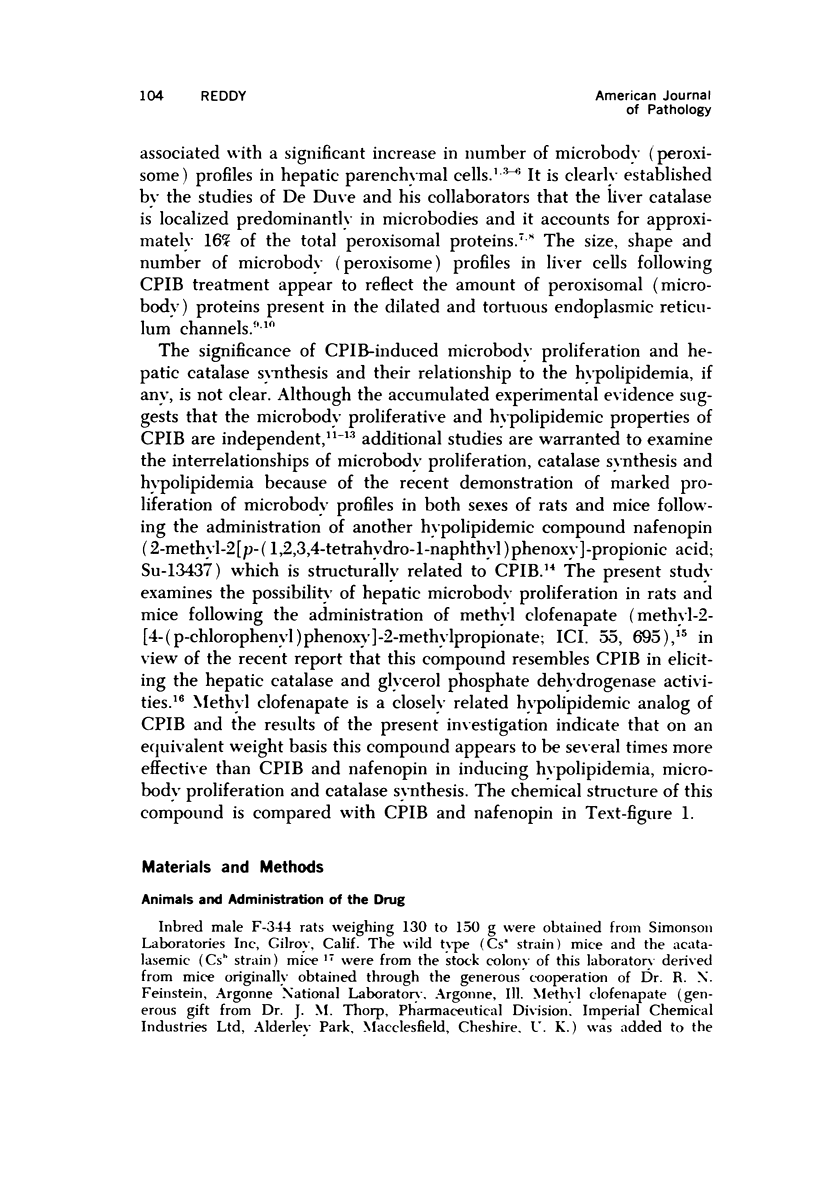






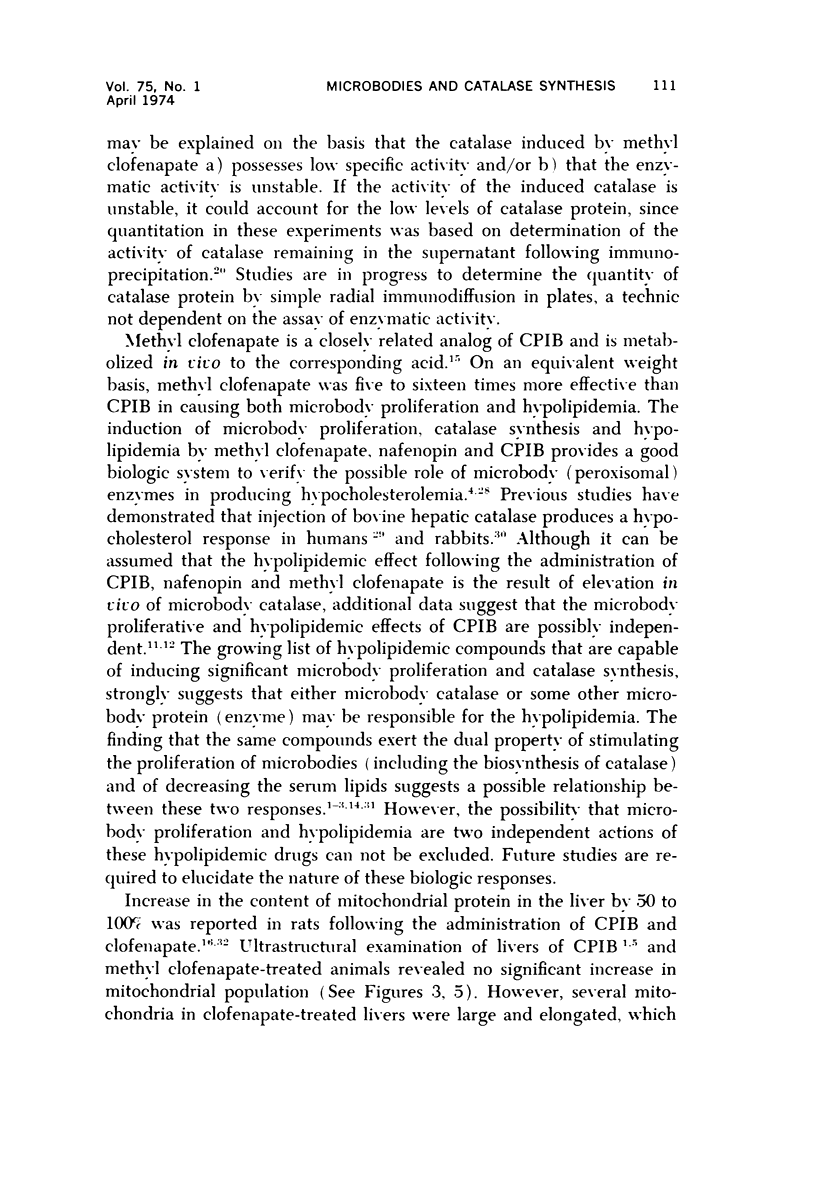
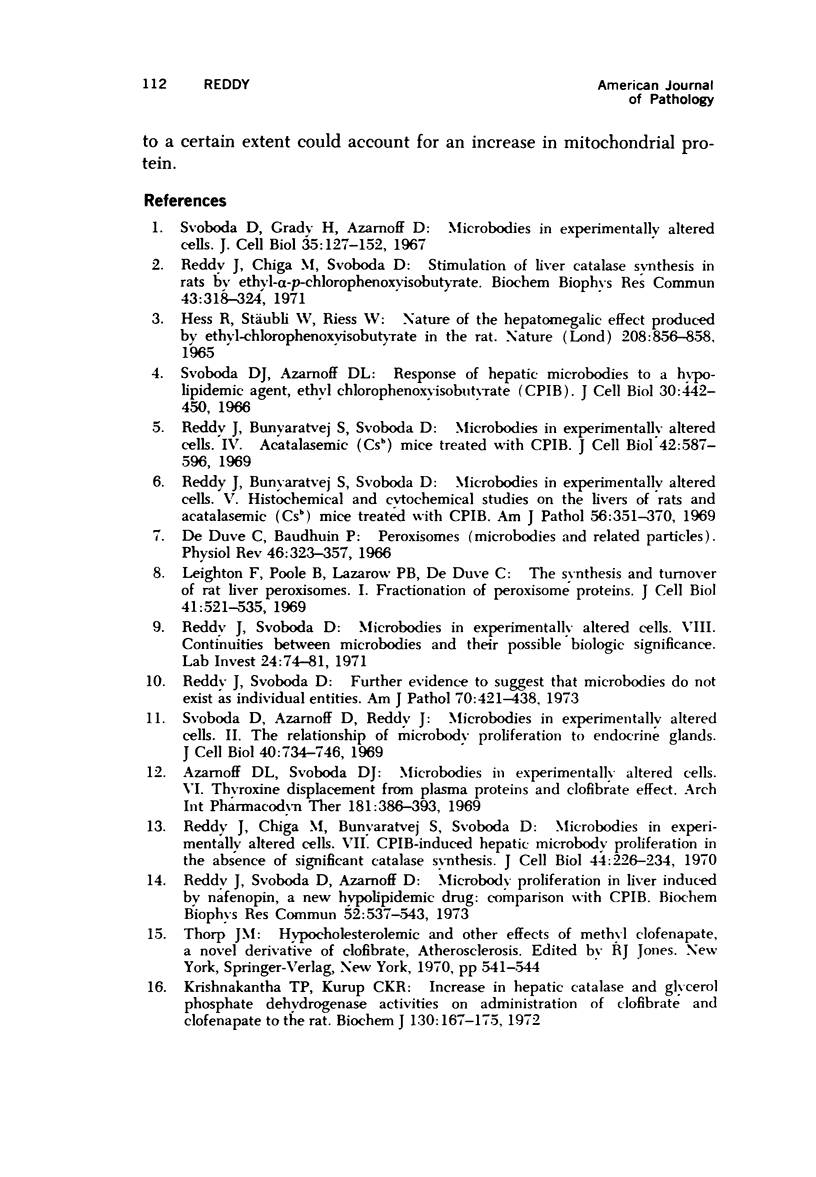



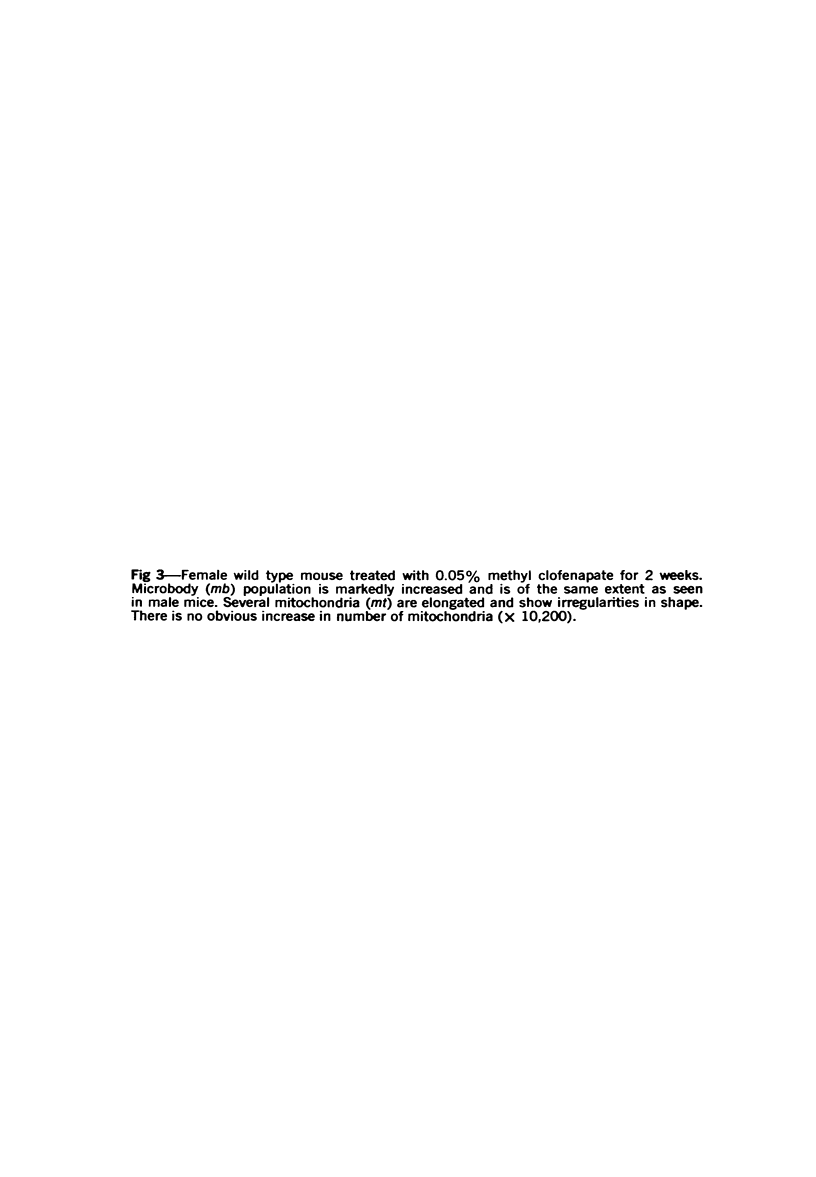
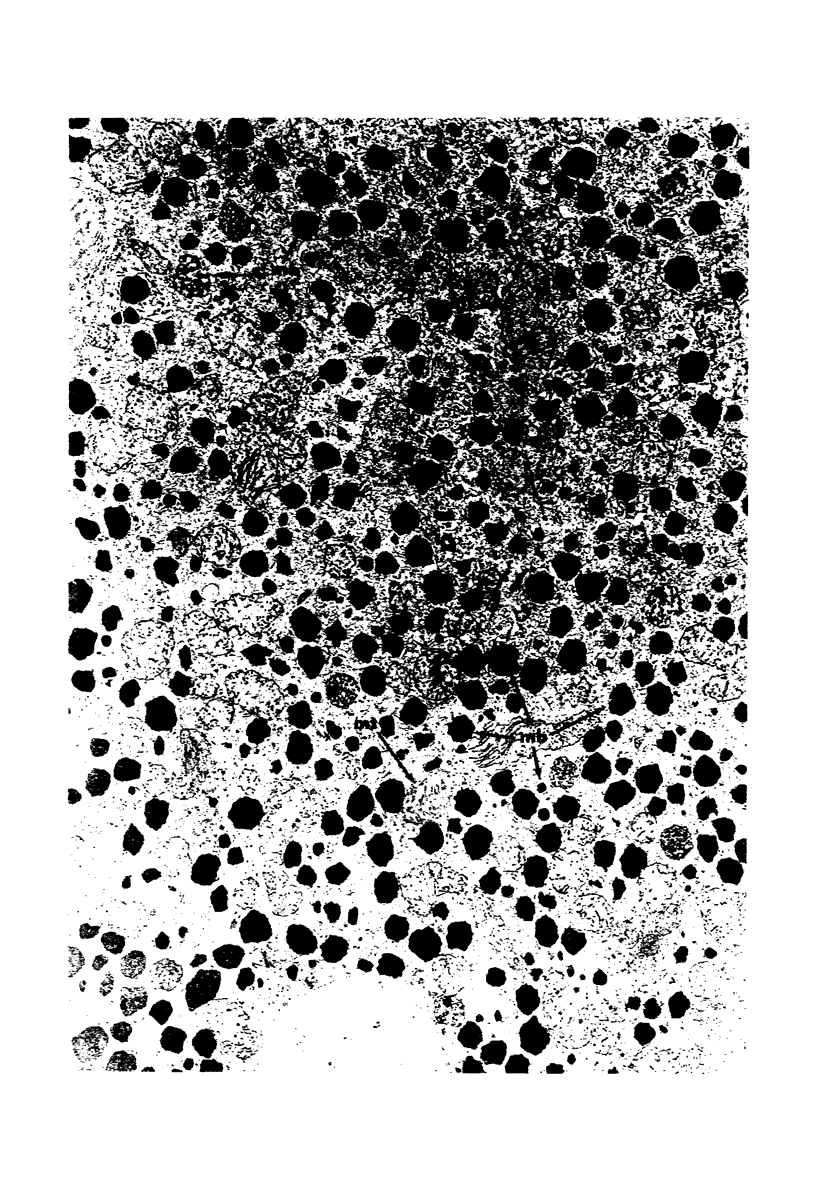

Images in this article
Selected References
These references are in PubMed. This may not be the complete list of references from this article.
- AZARNOFF D. L. Micromethod for the determination of serum lipids. J Lab Clin Med. 1962 Aug;60:331–338. [PubMed] [Google Scholar]
- Aebi H., Suter H., Feinstein R. N. Activity and stability of catalase in blood and tissues of normal and acatalasemic mice. Biochem Genet. 1968 Nov;2(3):245–251. doi: 10.1007/BF01474764. [DOI] [PubMed] [Google Scholar]
- Azarnoff D. L., Svoboda D. J. Microbodies in experimentally altered cells. VI. Thyroxine displacement from plasma proteins and clofibrate effect. Arch Int Pharmacodyn Ther. 1969 Oct;181(2):386–393. [PubMed] [Google Scholar]
- CONNEY A. H., BURNS J. J. Stimulatory effect of foreign compounds on ascorbic acid biosynthesis and on drug-metabolizing enzymes. Nature. 1959 Aug 1;184(Suppl 6):363–364. doi: 10.1038/184363a0. [DOI] [PubMed] [Google Scholar]
- Caravaca J., Dimond E. G., Sommers S. C., Wenk R. Prevention of induced atherosclerosis by peroxidase. Science. 1967 Mar 10;155(3767):1284–1287. doi: 10.1126/science.155.3767.1284. [DOI] [PubMed] [Google Scholar]
- De Duve C., Baudhuin P. Peroxisomes (microbodies and related particles). Physiol Rev. 1966 Apr;46(2):323–357. doi: 10.1152/physrev.1966.46.2.323. [DOI] [PubMed] [Google Scholar]
- Feinstein R. N., Braun J. T., Howard J. B. Acatalasemic and hypocathalasemic mouse mutants. II. Mutational variations in blood and solid tissue catalases. Arch Biochem Biophys. 1967 Apr;120(1):165–169. doi: 10.1016/0003-9861(67)90609-1. [DOI] [PubMed] [Google Scholar]
- Ganschow R. E., Schimke R. T. Independent genetic control of the catalytic activity and the rate of degradation of catalase in mice. J Biol Chem. 1969 Sep 10;244(17):4649–4658. [PubMed] [Google Scholar]
- Hess R., Stäubli W., Riess W. Nature of the hepatomegalic effect produced by ethyl-chlorophenoxy-isobutyrate in the rat. Nature. 1965 Nov 27;208(5013):856–858. doi: 10.1038/208856a0. [DOI] [PubMed] [Google Scholar]
- KARNOVSKY M. J. Simple methods for "staining with lead" at high pH in electron microscopy. J Biophys Biochem Cytol. 1961 Dec;11:729–732. doi: 10.1083/jcb.11.3.729. [DOI] [PMC free article] [PubMed] [Google Scholar]
- Krishnakantha T. P., Kurup C. K. Increase in hepatic catalase and glycerol phosphate dehydrogenase activities on administration of clofibrate and clofenapate to the rat. Biochem J. 1972 Nov;130(1):167–175. doi: 10.1042/bj1300167. [DOI] [PMC free article] [PubMed] [Google Scholar]
- Kurup C. K., Aithal H. N., Ramasarma T. Increase of hepatic mitochondria on administration of ethyl alpha-p-chlorophenoxyisobutyrate to the rat. Biochem J. 1970 Mar;116(5):773–779. doi: 10.1042/bj1160773. [DOI] [PMC free article] [PubMed] [Google Scholar]
- LOWRY O. H., ROSEBROUGH N. J., FARR A. L., RANDALL R. J. Protein measurement with the Folin phenol reagent. J Biol Chem. 1951 Nov;193(1):265–275. [PubMed] [Google Scholar]
- Leighton F., Poole B., Lazarow P. B., De Duve C. The synthesis and turnover of rat liver peroxisomes. I. Fractionation of peroxisome proteins. J Cell Biol. 1969 May;41(2):521–535. doi: 10.1083/jcb.41.2.521. [DOI] [PMC free article] [PubMed] [Google Scholar]
- Novikoff A. B., Goldfischer S. Visualization of peroxisomes (microbodies) and mitochondria with diaminobenzidine. J Histochem Cytochem. 1969 Oct;17(10):675–680. doi: 10.1177/17.10.675. [DOI] [PubMed] [Google Scholar]
- Poole B., Higashi T., De Duve C. The synthesis and turnover of rat liver peroxisomes. 3. The size distribution of peroxisomes and the incorporation of new catalase. J Cell Biol. 1970 May;45(2):408–415. doi: 10.1083/jcb.45.2.408. [DOI] [PMC free article] [PubMed] [Google Scholar]
- Reddy J. K. Possible properties of microbodies (peroxisomes). Microbody proliferation and hypolipidemic drugs. J Histochem Cytochem. 1973 Nov;21(11):967–971. doi: 10.1177/21.11.967. [DOI] [PubMed] [Google Scholar]
- Reddy J., Bunyaratvej S., Svoboda D. Microbodies in experimentally altered cells. IV. Acatalasemic (CSb) mice treated with CPIB. J Cell Biol. 1969 Aug;42(2):587–596. doi: 10.1083/jcb.42.2.587. [DOI] [PMC free article] [PubMed] [Google Scholar]
- Reddy J., Bunyaratvej S., Svoboda D. Microbodies in experimentally altered cells. V. Histochemical and cytochemical studies on the livers of rats and acatalasemic (Csb) mice treated with CPIB. Am J Pathol. 1969 Sep;56(3):351–370. [PMC free article] [PubMed] [Google Scholar]
- Reddy J., Chiga M., Bunyaratvej S., Svoboda D. Microbodies in experimentally altered cells. VII. CPID-induced hepatic microbody proliferation in the absence of significant catalase synthesis. J Cell Biol. 1970 Jan;44(1):226–234. doi: 10.1083/jcb.44.1.226. [DOI] [PMC free article] [PubMed] [Google Scholar]
- Reddy J., Chiga M., Svoboda D. Stimulation of liver catalase synthesis in rats by ethyl-alpha-p-chlorophenoxyisobutyrate. Biochem Biophys Res Commun. 1971 Apr 16;43(2):318–324. doi: 10.1016/0006-291x(71)90755-8. [DOI] [PubMed] [Google Scholar]
- Reddy J., Svoboda D., Azarnoff D. Microbody proliferation in liver induced by nafenopin, a new hypolipidemic drug: comparison with CPIB. Biochem Biophys Res Commun. 1973 May 15;52(2):537–543. doi: 10.1016/0006-291x(73)90745-6. [DOI] [PubMed] [Google Scholar]
- Reddy J., Svoboda D. Further evidence to suggest that microbodies do not exist as individual entities. Am J Pathol. 1973 Mar;70(3):421–438. [PMC free article] [PubMed] [Google Scholar]
- Reddy J., Svoboda D. Microbodies in experimentally altered cells. 8. Continuities between microbodies and their possible biologic significance. Lab Invest. 1971 Jan;24(1):74–81. [PubMed] [Google Scholar]
- Sakamoto S. I., Yamada K., Anzai T., Wada T. Morphological changes in the liver of rats treated with a new hypolipidemic agent, S-8527. Atherosclerosis. 1973 Jul-Aug;18(1):109–116. doi: 10.1016/0021-9150(73)90122-6. [DOI] [PubMed] [Google Scholar]
- Svoboda D. J., Azarnoff D. L. Response of hepatic microbodies to a hypolipidemic agent, ethyl chlorophenoxyisobutyrate (CPIB). J Cell Biol. 1966 Aug;30(2):442–450. doi: 10.1083/jcb.30.2.442. [DOI] [PMC free article] [PubMed] [Google Scholar]
- Svoboda D., Azarnoff D., Reddy J. Microbodies in experimentally altered cells. II. The relationship of microbody proliferation to endocrine glands. J Cell Biol. 1969 Mar;40(3):734–746. doi: 10.1083/jcb.40.3.734. [DOI] [PMC free article] [PubMed] [Google Scholar]
- Svoboda D., Grady H., Azarnoff D. Microbodies in experimentally altered cells. J Cell Biol. 1967 Oct;35(1):127–152. doi: 10.1083/jcb.35.1.127. [DOI] [PMC free article] [PubMed] [Google Scholar]



